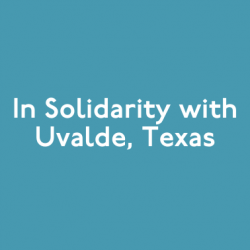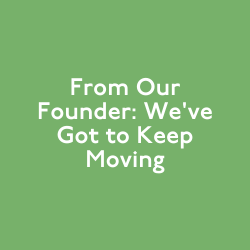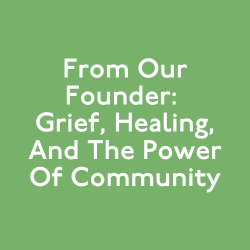Written by Founder and CEO, Sara Potler LaHayne
As a CEO of a start-up, we often take on roles we never imagined before putting our ideas into the world or even starting the company. In 2010, when I founded Move This World to help students and educators understand, express and manage their emotions healthily, I primarily identified as an artist and an educator. I rarely use social media, and I don’t consider myself tech savvy.
Never in a million years did I think I’d be running a tech company. If anything, I was on the hunt for a cure to the technological dependency that has ruined relationships, attention spans, and the ability to empathize. Only when we were pushed to the brink did we realize the full potential of technology to deliver our programming.
It seems obvious in retrospect, but at the time I was determined to make our model of delivering direct service to students and teachers work. That meant riding Amtrak through the night to cover extra sessions, managing logistics for trainings across the country, staying up late to debrief with trainers following their sessions, hounding friends and board members for more resources and connections to more trainers.
Everything changed when a particularly powerful session inspired a teacher to write us an email thanking us and asking if there was any way we could deliver programming on a daily basis. I thought about the options–training someone to deliver the work or hopping on another train myself–and realized this would be impossible. We didn’t have the funding and I didn’t have the capacity. So we whipped out a phone and recorded a video for the teacher to use with his students.
His response: Please send more.
The videos were a hit. The next week, we received a video of our own, this one sho>ducwing the students engaged in the exercise we had sent over. It was like magic. Suddenly, we could reach 30 more people without leaving the office. We quickly realized this number could increase exponentially. Soon after, I became the CEO of a tech company.
As someone who uses their phone only for calls and emails, this was uncharted territory. Making this huge pivot was a risk. We could have easily failed. But we deeply believed in the work, so we went for it anyway.
That level of belief in social emotional learning kept us hunting for solutions instead of an exit. After a long and incredibly challenging year, getting a request for daily programming could have been the straw that broke the camel’s back. Instead, it was the moment we needed to become who we were meant to become.
Through the mud, we found clarity. As it turns out, that recipe is often the secret to success.
When we try out new ideas, some fall flat and some take wing. But those truly great ideas live in the danger zone, the area where we often fail. Those are often our boldest innovations.
Fast forward to 2019, and what started as a cell phone video has transformed our organization. Move This World is currently working across twenty-six states and Washington DC. We’ve impacted over half a million students. We recently raised our first seed round–another opportunity to stare failure right in the face. Although I’d never raised a round of equity before, every morning I took a deep breath and went for it.
It’s not at all where I thought I would be 12 years ago. And yet, it’s exactly where I’m supposed to be.
This article was originally published by EdWeek Market Brief on January 16th, 2019.










